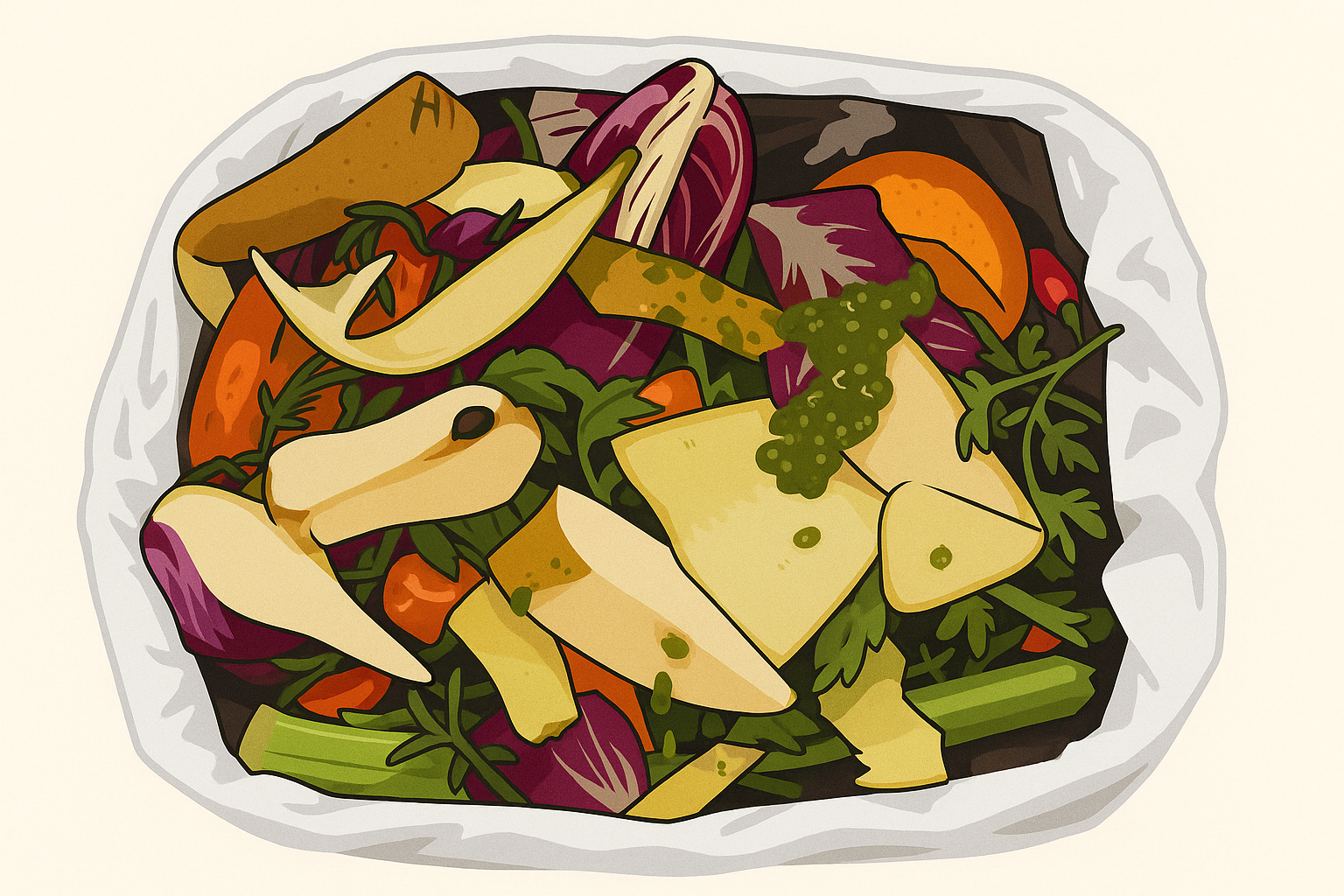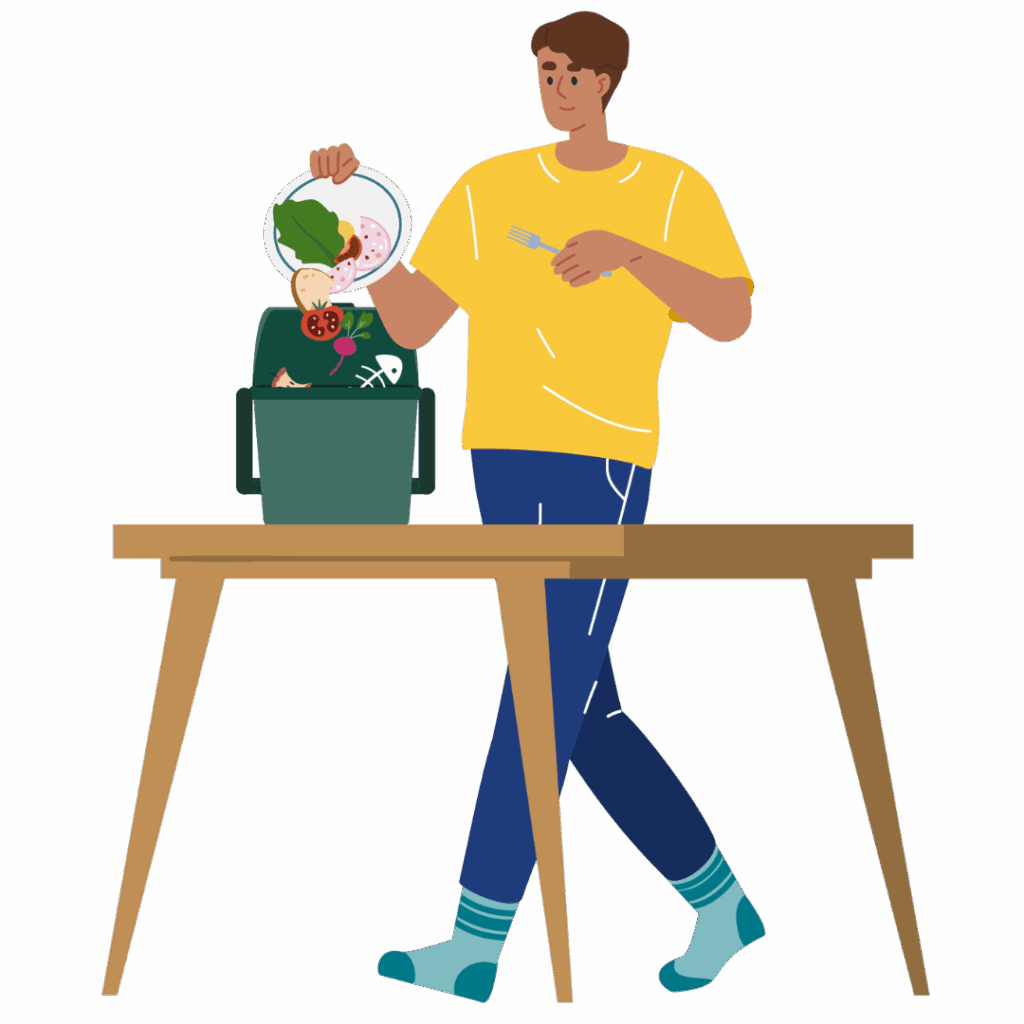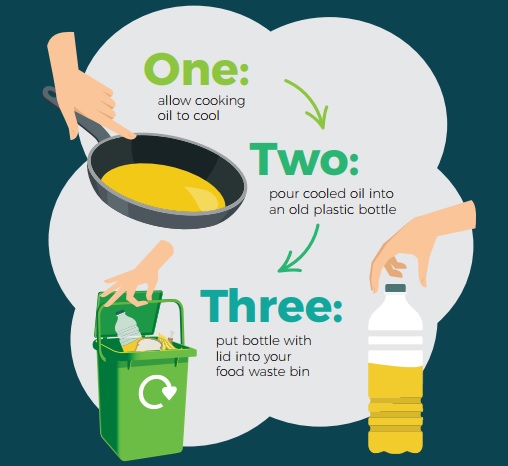
Your food waste
Thank you for scanning our food waste sticker. We are really pleased that you would like to start recycling your food waste!
We collect food waste weekly!
Simply put your food waste into your small kitchen caddy each day and then transfer it into your larger outdoor caddy ready for collection.

If you wish to order a new indoor food caddy:
- South Oxfordshire residents – email admin.southoxford@biffa.co.uk
- Vale of White Horse residents – email admin.vale@biffa.co.uk
- or call Biffa on 01235 422123
Do you need to line your food caddy?
Food waste can be put into your food waste caddy loose, wrapped in a couple of sheets of newspaper, or in plastic (e.g. carrier bags, pedal bin liners, bread bags) or compostable liners. Please do not use black bags.
What about cooking oil?
We can now collect cooking oil placed in a plastic bottle (no bigger than 1 litre) from inside your food recycling caddy. If it does not fit inside your caddy you can place it next to your caddy. We will only collect from plastic bottles and will not accept oil in glass bottles/jars or any other container.

Please don’t put food packaging into your food recycling caddy!
Please don’t put any food packaging (including compostable packaging) into your caddy unless it is being used as a liner. Biodegradable and compostable products require oxygen to break down so they would not work in our process. If we accepted compostable and biodegradable packaging it would contaminate the fertiliser and it wouldn’t be safe to use.
What happens to your food waste?
Food waste is taken to an ‘Anaerobic Digestion’ facility near Wallingford where it is turned into energy to power 4,800 homes. It takes 85 days for the food waste to break down and the waste left at the end of the process is sold onto local farmers as a nutrient-rich fertiliser.
If you’d like to find out more about this process, take a look at this short video from waste facility provider Severn Trent Green Power.
We also organise tours of this facility. To find out more, visit our:
- Waste Facility tour page – South Oxfordshire Residents, or
- Waste Facility tour page – Vale Residents
How we’re Rethinking Waste
This campaign is part of our new Rethinking Waste – Waste Resources and Street Cleansing Strategy. Following the key themes of Reduce, Reuse, Recycle and Recover the strategy sets out ways everyone can reduce the amount of waste they produce and try to reuse, repair, refill and rehome items as the go to option, instead of throwing them away.